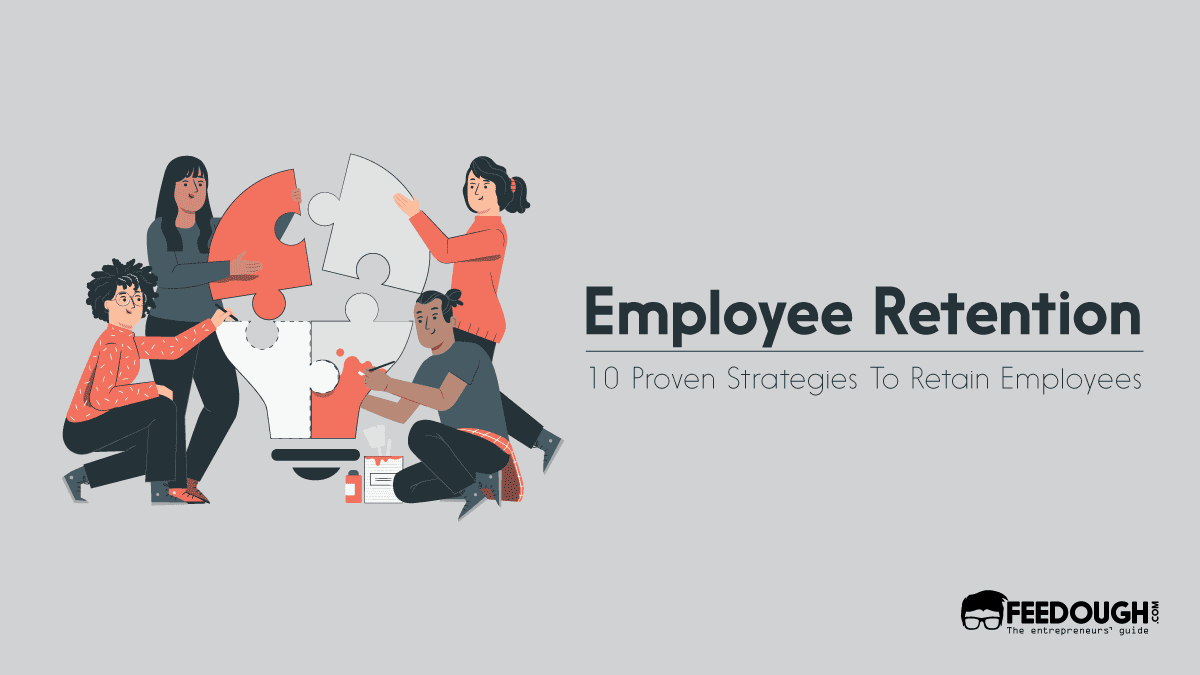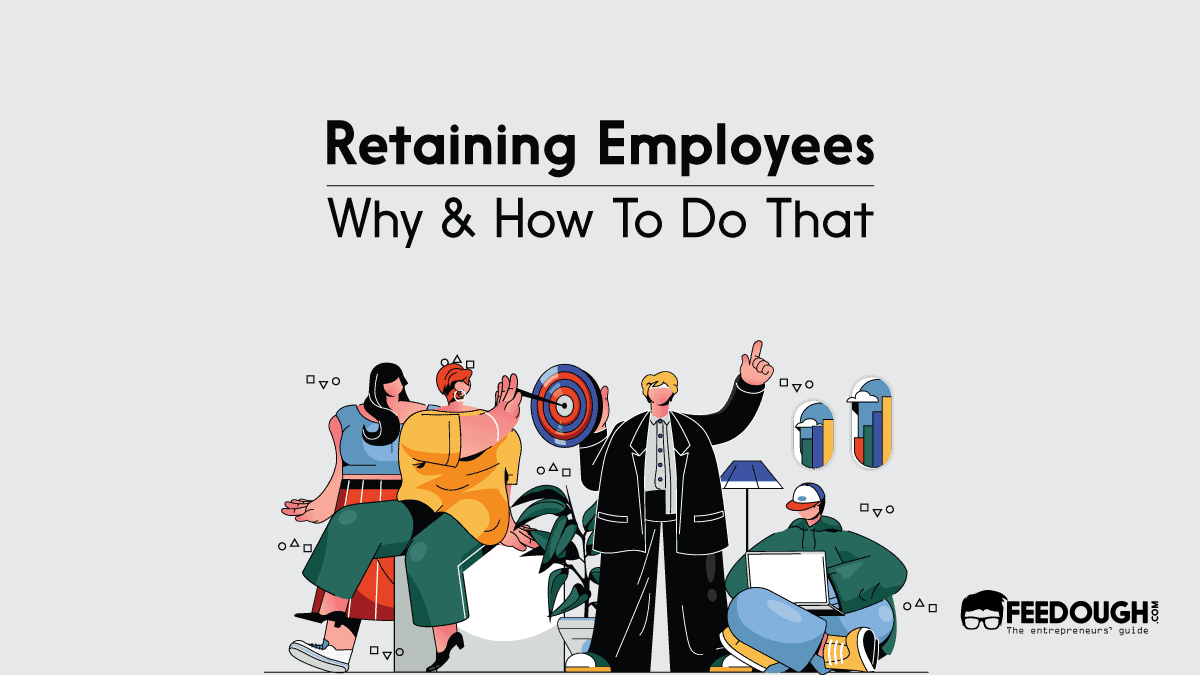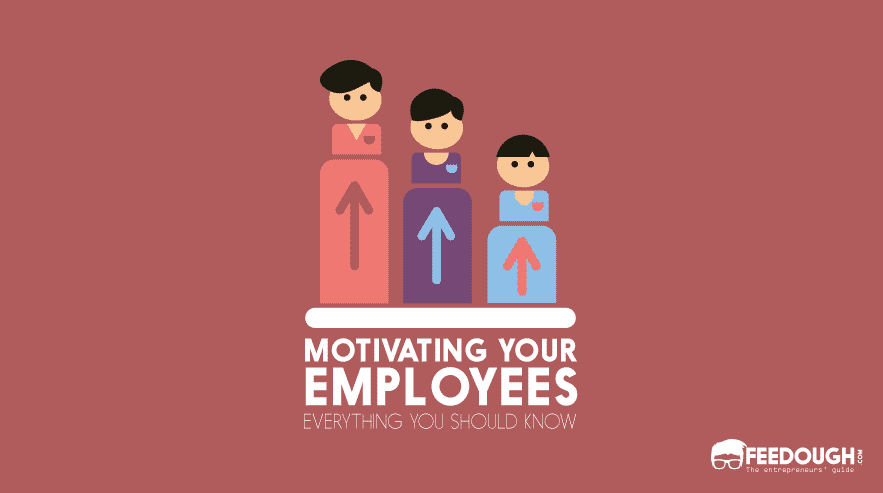While hiring promising employees is a struggle in itself, retaining them in the long run is an even greater challenge. Employee retention is what sets apart a successful business from an unsuccessful one. Not only does it save costs on constant training and recruitment, but it also boosts employee morale and productivity.
Moreover, consider this scenario- you have a team of highly skilled and experienced employees who have been with your company for a while. Suddenly, one by one, they start leaving for better opportunities elsewhere. You are left with new hires who require extensive training and take time to adapt to their roles. This affects your company’s overall productivity and puts a strain on the remaining employees who have to shoulder the extra workload. It’s a lose-lose situation that every company wants to avoid.
To prevent such situations, it is crucial for you to have a solid employee retention strategy in place. But this isn’t the only reason why employee retention is essential. Let’s dive deeper into the topic and understand the importance of employee retention strategies.
The Importance of Retaining Employees
Having old, experienced employees in your team is not only beneficial for the company but also for its customers. Here are some compelling reasons why employee retention should be a top priority for every organisation:
- Cost-effective: According to some reports, the average cost to replace an employee ranges from one to two times the employee’s annual salary. This cost includes hiring, onboarding, training, ramp time to peak productivity, the loss of engagement from others due to high turnover, higher business error rates, and general culture impacts. Moreover, when it comes to hourly employees, it can be as high as $1500 and can be as high as 213% of an employee’s salary if it’s for a C-suite employee.
- Maintaining company culture: Employees who have been with the company for a longer period tend to be more invested in its culture. They are familiar with the company’s values, goals, and practices, making them valuable assets when it comes to maintaining and promoting a positive workplace culture.
- Boosts profitability and productivity: A study by Gallup highlights that companies that manage to hire candidates from the top 20% of their existing talent pool experience 21% higher profitability and a 17% increase in productivity. This is because when employees stay with the company longer, they become more efficient in their roles and bring a wealth of experience and knowledge to their work.
- Positive company reputation: With the rise of social media and online employer review platforms, a company’s reputation is easily accessible to potential employees. High employee turnover can lead to negative reviews and feedback, decreasing the quality of applicants. On the other hand, a low turnover rate reflects positively on the company’s culture and work environment, attracting top talent.
Why Do Employees Leave?
Just knowing about the importance of employee retention is not enough; companies need to understand why workers leave. Here are some of the most common reasons for employees seeking new job opportunities:
- Low Pay: 63% of workers who quit their jobs in 2021 cited insufficient compensation as a major reason for their decision. Employees need to feel that their efforts and contributions are being fairly compensated, and if they feel underpaid, they will be more likely to look for higher-paying opportunities.
- Lack of Opportunities for Advancement: This factor is another major reason why employees choose to leave their jobs, with 63% of workers citing it as a cause for quitting. When employees perceive that there is no room for growth or advancement within a company, they are more likely to seek opportunities elsewhere.
- Feeling Disrespected or Unappreciated: Employees want to feel valued and respected in their workplace. When they feel that their contributions are not appreciated or that they are disrespected by management or colleagues, it can lead to feelings of dissatisfaction and ultimately result in them leaving the company. In fact, 57% of workers who quit their jobs in 2021 cited this as a contributing factor.
- Toxic Company Culture: A negative or toxic company culture can also significantly contribute to employee turnover. According to Forbes, 62% of workers consider leaving their jobs due to a poor workplace culture. A toxic environment can include factors such as lack of communication, micromanagement, lack of trust and support, and high levels of stress.
- Poor Management: A significant determining factor in employee retention is the quality of management. Research indicates that 56% of employees have contemplated leaving their jobs due to poor management. Mismanagement can manifest in various ways, such as a lack of clear communication, inadequate feedback, favouritism, or micromanagement. When employees feel their leaders are not competent or do not treat them fairly, they may feel demotivated and consider seeking employment elsewhere where they can work under better management.
- Lack of Healthy Work-Life Boundaries: Achieving a healthy work-life balance is crucial for maintaining employee satisfaction and retention. Around 49% of workers consider leaving their jobs due to a lack of work-life balance.
Once you have identified the potential reasons that may drive employees to leave, you can take proactive measures to improve your employee retention rate. Here are ten proven employee retention strategies to help you retain top talent and build a loyal workforce.
10 Proven Employee Retention Strategies
Here’s a list of employee retention strategies that can help you reduce turnover and retain your top-performing employees:
Ensure Competitive Compensation and Benefits
One of the most crucial factors that determine employee retention is compensation and benefits. It’s a big reason why more than half of employees leave their jobs.
Fair pay not only shows appreciation for employees’ hard work but also ensures that their basic needs are met. Besides, offering additional benefits like health insurance, retirement plans, and bonuses can make your employees feel valued and motivated to stay with your company.
The importance of competitive compensation and benefits in retaining employees can’t be overstated. You –
- Save on the cost of hiring and training new employees
- Increase motivation and morale amongst your workforce
- Attract top talent in a competitive job market
- Build a positive employer image
Regularly review your pay scales and employee benefits packages to ensure you offer competitive compensation and benefits. Focus on your industry standards and consider the cost of living in your employees’ location.
You can even survey your employees to understand their expectations and make necessary adjustments.
Provide Opportunities for Growth and Development
Employees want to feel like they are constantly learning and growing in their careers. According to Gallup, 87% of millennials consider professional development opportunities essential when considering a job.
Moreover, offering opportunities for growth and development can keep employees engaged, motivated, and loyal to your company. They see a future with your organisation and are more likely to stay for the long haul.
You can provide such opportunities through regular training, mentorship, or tuition reimbursement programs. For example, you could offer your employees access to online courses, conferences, or workshops relevant to their roles and interests. You can even create a career development plan for each employee and work with them to reach their goals.
This not only shows your employees that you are invested in their growth and success, but it also improves their skills and knowledge, which can contribute to the overall success of your business. Plus, with a strong focus on employee development, you can nurture future leaders within your organisation and reduce the need for external hiring.
Foster Strong Relationships and Communication
While feeling disrespected or unrecognised for their contributions are leading reasons why employees leave, lack of connection with coworkers is also a significant factor. Employees who feel a sense of belonging and camaraderie with their colleagues are more likely to stay loyal to their company.
And it’s not something that’s not in your hands. As a manager or business owner, you can create an environment that fosters strong relationships between team members by encouraging collaboration, creating opportunities for social interactions outside the workplace, and promoting open communication.
Here are a few strategies you can implement to build a sense of community within your team:
- Host regular team-building activities and events, such as happy hours or group outings.
- Encourage cross-functional collaborations and projects to help employees get to know each other better.
- Create an open-door policy where employees feel comfortable sharing their thoughts and concerns with you.
- Implement employee recognition programs to acknowledge your team members’ hard work and contributions.
- Set up regular check-ins or one-on-one meetings to foster a deeper understanding between employees and their managers.
Open communication is especially important in maintaining employee retention. Employees who feel that their voices are heard and valued are more likely to stay at a company.
Additionally, promoting an open-door policy can also help identify potential problems or concerns that may lead to employee turnover. Addressing these issues early on can prevent employees from becoming dissatisfied and leaving the company.
Offer Career Development Opportunities
Employees don’t just want a job – they want a career. Providing opportunities for growth and development is crucial in retaining your top talent. This can include offering training, mentorship programs, or even tuition reimbursement for employees looking to further their education.
Not only does this show that you value your employees’ professional growth, but it also helps them feel invested in the company’s success.
According to a study by Udemy in 2016, as cited in the Harvard Business Review, professional development opportunities are a key component in fostering engagement and retention amongst employees. The study emphasises three vital strategies to enhance retention through professional development:
- comprehending the career aspirations and goals of employees,
- facilitating consistent career-focused conversations, and
- pinpointing individual strengths and areas that need improvement.
This not only highlights the importance of acknowledging employee growth but also underlines the significance of their contribution to the success of the company.
Moreover, a survey of more than 2,000 employees by UMass Global reveals that organisations offering professional development opportunities have 15% more engaged employees. Additionally, these organisations have a higher employee retention rate compared to those that do not offer such opportunities.
Recruit The Right Employees
Recruiting the right employees is probably one of the most crucial employee retention strategies. And this is totally in your hands. It is your job to ensure that the new hires are a good fit for the company culture and have the right skills for their roles. If not, these employees will likely feel disconnected and unfulfilled, leading them to leave the company.
Employees who feel their skills are underutilised in their current roles are more likely to quit. Similarly, employees who do not fit into the company culture may feel isolated and out of place, leading to a lack of job satisfaction. T
Take this example: if you hired someone for a customer service role and later found out that they lack basic communication skills, it is highly likely that this employee would not be satisfied in their job. Similarly, if the company culture promotes collaboration and teamwork, but a new hire prefers working independently, this employee is more likely to leave.
Therefore, it is crucial to invest time and resources in recruiting the right employees for your company. This not only increases employee retention but also ensures that your team is productive and motivated.
Focus On Work From Anywhere
Post pandemic, remote work has become the norm for many companies. And this flexible work arrangement has proved to be a great employee retention strategy. Employees now know that they can work from anywhere and still be productive. This flexibility not only adds convenience to their lives but also shows that the company trusts them to get the job done, regardless of their location.
Moreover, offering remote work options increases employee satisfaction by eliminating long commutes and providing a better work-life balance. And with so many companies now offering remote work opportunities, employees are more likely to stay with a company that offers this benefit.
Consider this, you live in Chandigarh, India and have been working for a company based in Mumbai. While you love your job, living in a crowded city and pricey real estate is taking a toll on your mental and financial well-being. Then one day you get a call from a friend who tells you about an exciting job opportunity in a competitor company that offers remote work. What would you do? Most likely, consider it as a chance to improve your quality of life while still keeping your job.
Ensure They Maintain A Work-Life Balance
Know that there’s far more to life than work. While it’s essential to focus on employee productivity, it’s equally vital to ensure that they maintain a healthy work-life balance. Long working hours and constant pressure can lead to burnout, affecting employee retention rates.
Employees hate when their work-life balance is compromised. Companies are often reluctant to hire more staff due to budget constraints, but this can harm employee mental health in the long run. In fact, 77% of full-time American workers have experienced job burnout and 66% believe they lack work-life balance. This results in a really high employee attrition rate.
A few strategies you can implement to ensure work-life balance for your employees are:
- Offer flexible scheduling: Allowing employees to have control over their work hours can make a significant difference in their work-life balance. It enables them to schedule appointments, attend family events, and take care of personal responsibilities while still fulfilling work obligations.
- Encourage downtime: While it’s essential to meet deadlines and achieve targets, it’s equally important to give employees time to recharge. Encourage them to disconnect from work after office hours and take breaks throughout the day.
- Set realistic expectations: Unrealistic goals and excessive workload can lead to stress and burnout. Make sure you set achievable targets for your employees and provide the necessary resources and support for them to accomplish their tasks.
- Offer remote or telecommuting options: With the rise of technology, remote work is becoming more popular and can be an effective way to promote work-life balance. Allowing employees to work from home or other locations can save them commute time and give them more flexibility.
- Implement wellness programs: Physical and mental health are crucial components of a healthy work-life balance. Consider offering gym memberships, mental health support services, or organising wellness activities to promote employee well-being.
Focus On Your Workplace Culture
Your company’s culture plays a significant role in employee retention. Let’s say you work at a company where long working hours and constant pressure to perform are the norm. Moreover, when employees take time off, they are made to feel guilty or get behind on their work. In that case, it’s no surprise that the employee retention rate may be low.
It’s essential to foster a positive workplace culture where employees feel valued and supported. Here are some ways you can do that:
- Encourage open communication: Create an environment where employees feel comfortable expressing their opinions and concerns. Regular team meetings and one-on-one catch-ups can help foster open communication.
- Promote teamwork and collaboration: Encourage employees to work together on projects and recognise their contributions as a team effort. This not only promotes a sense of belonging but also boosts morale.
- Recognise and reward employees: Employees who feel appreciated are more likely to be engaged and motivated. Consider implementing a recognition and rewards program to acknowledge the hard work and achievements of your employees.
- Invest in employee development: Providing opportunities for learning and growth can show employees that you are invested in their personal and professional development. This can boost their job satisfaction and loyalty to the company.
Offer Incentives
Who doesn’t love a good incentive? But what if you worked for a company that never offered bonuses or rewards? You may feel undervalued and start looking for other opportunities. Offering incentives is a great way to show employees that their hard work and dedication are recognised and appreciated.
Here are some examples of incentives you can offer:
- Performance-based bonuses: Consider offering bonuses based on individual or team performance to incentivise productivity and goal achievement. This not only motivates employees but also aligns their interests with the company’s objectives.
- Time off: Giving employees additional time off for a job well done can be a great way to show appreciation and promote work-life balance.
- Professional development opportunities: Invest in your employees’ growth by providing them with opportunities to attend workshops, conferences, or training sessions. This shows that you value their professional development and can help retain top talent.
Ensure No Burnout
Employee burnout refers to physical, emotional, and mental exhaustion caused by prolonged and excessive stress. It can lead to decreased productivity and job dissatisfaction and ultimately impact employee retention.
According to Gallup, employees who experience burnout are 2.6 times more likely to search for a new job, indicating a direct link between burnout and retention.
As an employer, it’s essential to recognise the signs of burnout and take proactive measures to prevent it. Here are some ways you can ensure no burnout in your workplace:
- Encourage breaks: Taking short breaks throughout the workday can help employees recharge and avoid feeling overwhelmed.
- Promote work-life balance: Be mindful of employees’ workload and encourage them to leave work at work. Encourage them to disconnect from work during their time off.
- Recognise and address stressors: It’s crucial to identify and address sources of stress in the workplace, whether it be heavy workloads, unrealistic deadlines, or toxic working relationships.
- Allow flexible schedules: Allowing employees flexibility with their schedules can help alleviate burnout by giving them more control.
Bottom-Line?
Your employees are the backbone of your company, and retaining them is crucial for long-term success. By implementing these strategies, you can create a positive work environment, show your employees that you value them, and ultimately improve your employee retention rate.
Remember to assess and adjust your efforts as needed continuously. Employee retention is an ongoing process that requires attention and effort from all levels of the organisation. With a strong focus on employee well-being and engagement, you can create a workplace culture that promotes loyalty, productivity, and overall success.
A startup consultant, digital marketer, traveller, and philomath. Aashish has worked with over 20 startups and successfully helped them ideate, raise money, and succeed. When not working, he can be found hiking, camping, and stargazing.









